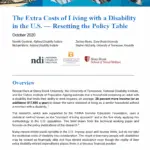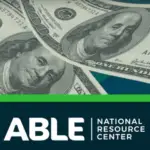
The Hidden Costs of Living with a Disability
“The Inclusive Traveler” Episode
Katie Gatti Tassin, Jenny Burke, and Kelsey Ibach
Morning Brew Podcast (2025)
Key Takeaways
- Plan for the “what-ifs.” Unexpected disability can add $50k-$100k+ in first-year expenses (equipment, home changes, lost income). Building an emergency fund and securing long-term disability insurance lowers the financial shock.
- Insurance rarely covers everything. Wheelchairs, home modifications, personal-care supplies and accessible transportation often fall outside standard plans—advocate firmly and budget for gaps.
- Accessibility saves money, too. Cities, museums, and transit systems that embrace universal design (e.g., curb cuts, elevators, free or discounted fares) reduce both stress and out-of-pocket costs.
- Community equals leverage. Sharing lived-experience tips—such as free bus travel in Paris or how to pre-board with a wheelchair—turns hidden costs into informed choices and fuels policy change.
Click to read the full summary
The Essentials
Living with Functional Neurological Disorder often means variable income, fluctuating energy, and occasional mobility or sensory challenges. This conversation shines a light on the true price tag of disability—from custom equipment and housing retrofits to extra planning time and “invisible” expenses that insurance doesn’t touch.
Katie, Jenny, and Kelsey also show the upside: practical hacks, travel strategies, and the power of allies who speak up about accessibility. Their stories normalize asking for accommodations at work, budgeting for adaptive gear, and using city resources that already exist but aren’t widely advertised. For anyone with FND—or caring for someone who is—these insights translate to fewer surprises, better financial resilience, and greater confidence to keep exploring the world.
Why This Matters for FND
Many people with FND ride a roller-coaster of symptoms that can shift independence overnight. By highlighting both immediate costs and longer-term planning tools, this episode helps you anticipate financial pressure points and advocate for accessible environments—key steps in calming the nervous system and reducing flare-triggering stress.
Practical Applications
For People with FND:
On Low-Energy Days
Use a voice memo to list recurring disability-related expenses; set a calendar reminder to investigate insurance coverage gaps when rested.
Building Long-Term Wellness
Price a private long-term disability policy (or confirm employer coverage) and add “accessibility fund” line-item to your budget or sinking-fund app.
For Care Partners:
Supporting Your Loved One
Offer to batch phone calls to insurers or hotels to confirm accessibility, easing cognitive load.
Caring For Yourself
Schedule an annual review of home or vehicle adaptations; include yourself in the budget so caregiving tasks don’t silently drain your own resources.
When This is Most Helpful
- Newly diagnosed and unsure how FND might affect finances or mobility
- Post-flare or progression when additional equipment or home changes are required
- Pre-travel planning—especially for flights, older cities, or high-cost destinations
Citation
“The Hidden Costs of Living with a Disability.” Money with Katie, hosted by Katie Gatti Tassin, featuring Jenny Burke and Kelsey Ibach, Morning Brew Podcast, 2025. Podcast.
This summary is provided for informational purposes only and does not constitute medical, financial, or legal advice. It is not intended to replace professional consultation or treatment. Always consult qualified providers regarding your specific circumstances, symptoms, or questions.



